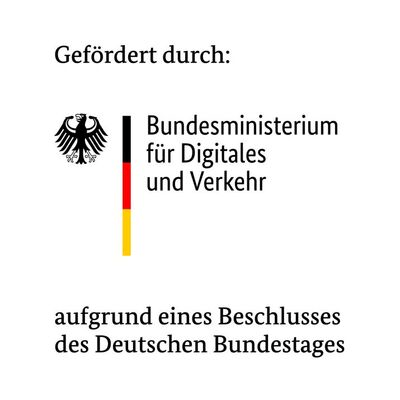CLOUD56 - Scalable Cloud Architecture for 5G/6G RAN and Industrial Applications
CLOUD56 is an industrial research project that redefines the boundaries of network technology. It is the first to combine Radio Access Network (CloudRAN) virtualization and industrial application hardware on a common platform. This innovative approach offers many advantages, including increased availability and energy efficiency, improved scalability and maintainability, and dramatically accelerating 5G/6G implementations.
Different architectures are modeled and implemented as on-premises solutions to ensure low-latency responses for time-critical applications. A key focus is collaboration with companies from various industries, including manufacturing, healthcare, construction, and production. The developed infrastructure is thoroughly analyzed in extensive studies to evaluate its performance, security, scalability, portability to other platforms, and the potential for integrating future 6G features.
The goals at a glance:
- Physical to virtual: Replacing hardware in the operating room with virtualized applications.
- Availability and energy efficiency: Maximizing network availability while increasing energy efficiency.
- Scalability and maintainability: Enabling the operation of both very large and very small network elements, along with improved maintainability.
- Acceleration of 5G/6G deployments: The novel container-based virtualizations are expected to reduce deployment times of 5G/6G applications significantly.
- Cross-industry applications: The use cases are distributed across different industries to exploit the potential of innovative solutions.
- Research and collaboration: Close collaboration with companies and research institutions is essential to achieve common goals and shape the future of network technology.
Funding

The research project CLOUD56 is funded by the German Federal Ministry for Digital and Transport (BMDV).
Funding code: 11-12212
(Project duration: 04/2023 – 12/2024)
The project addresses the following areas in a total of 5 work packages:
- Sensor-to-cloud pipeline for condition monitoring in steel production.
- Development, implementation, and testing of AI-based perception algorithms for robot applications and virtualization and orchestration of applications on an edge system.
- Virtualized assistance functions in the operating room and clinic.
- Cloud and robot-assisted prefabrication of steel components.
- Expansion of Cloud RAN infrastructure with future features.
The Chair of Medical Engineering (mediTEC) focuses on Virtualized Assistance Functions in the Operating Room and Clinic. This work package demonstrates the benefits of 5G/6G campus networks and Cloud RAN deployments for the application of connected medical devices in the operating room through three use cases. The 5G campus network is extended to the demonstrator operating room at the Chair of Medical Engineering at RWTH Aachen University. Selected clinical assistance functions are transformed into containerized services in hybrid cloud-edge deployments, making them available to all connected operating rooms and treatment rooms.
The individual use cases are:
Use Case 1: Wireless Ensemble Formation
Ensemble formation is essential to enable medical devices to communicate with each other in an open-networked operating room. Devices are associated with each other based on predefined characteristics (position, tags, etc.), creating a device ensemble. An SDC communication, according to ISO IEEE 11073 SDC, can and may only occur within such an ensemble. Especially critical is the association of devices through proper authentication and identification of users and devices.
In the networked operating room, mobility and wirelessness in particular pose new challenges for IT security. Data and devices must be correctly assigned to each other, and no faulty ensemble must be created during patient transport. This work package, therefore, investigates methods for wireless ensemble formation using 5G and SDC.
Use Case 2: Video Streaming
The wireless networking of an endoscopy device cart presents exceptionally high demands. Virtualized applications for video signal processing are used, allowing the processing of the video stream with various clinically relevant image filters and enabling image-based predictions (classification, detection, segmentation, interpretation, etc.). The result of the clinical applications can be displayed to the user in the operating room on a central monitor during surgery.
A robust 5G connector is integrated into an operating room device cart, and the corresponding data stream in the network (Quality of Service) can be prioritized to prevent delays or failures with increasing network load. This presents a challenge, as the requirements for low latency and high data rates often conflict with traditional 5G application profiles (eMBB, URLLC). The result is the processing of video data in the edge cloud instead of using costly redundant hardware in operating rooms. On-site, there would be a shift towards pure sensing and display devices.
Use Case 3: Voice Control in the Operating Room
Based on machine learning algorithms, voice control in the operating room is developed, enabling the safe and user-friendly control of medical devices through simple commands. Complex instructions for application configuration are also possible. The goals include determining acceptance criteria, installing a voice control solution as an edge cloud deployment, universal command recognition, dynamic device control, function assignment, and testing response time and accuracy for technical terms. Use cases range from assigning functions to specific device buttons to fine-tuning medical devices through spoken instructions. An edge cloud deployment reduces latency and eliminates the need for computing clusters in the operating room.
Expected Impacts:
The work package Virtualized assistance functions in the operating room and clinic in the CLOUD56 project aims to make applications in the operating room with shared and virtualized edge cloud hardware and applications available to clinicians. This creates added value for medical personnel, the hospital, and ultimately the patients. Improved scalability and maintainability also save resources. Using the cross-manufacturer ISO IEEE 11073 SDC standard family also enables small and medium-sized companies to have barrier-free market access, thus strengthening competition.
The infrastructure developed in the project is evaluated in terms of performance, scalability, and the potential for integrating future 6G features, providing the foundation for implementing such applications.
Partner
- Chair of Medical Engineering, RWTH Aachen University
- SurgiTAIX AG
- Richard Wolf GmbH
Associated partner
- OR.NET e.V.
Subcontracts
- Beger Design
- Bonn Surgical Technology Center (BOSTER)
- OR-Management, Universitätsmedizin Essen
- IMA Consult


